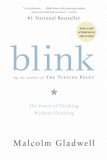Summary | Excerpt | Reading Guide | Reviews | Beyond the Book | Readalikes | Genres & Themes | Author Bio

Critics' Opinion:
Readers' Opinion:
First Published:
Jan 2005, 288 pages
Paperback:
Apr 2007, 320 pages
 Book Reviewed by:
Book Reviewed by:
BookBrowse Review Team
Buy This Book
But John Gottman has proven that we don't have to do that at all. Since the 1980s, Gottman has brought more than three thousand married couples—just like Bill and Sue—into that small room in his "love lab" near the University of Washington campus. Each couple has been videotaped, and the results have been analyzed according to something Gottman dubbed SPAFF (for specific affect), a coding system that has twenty separate categories corresponding to every conceivable emotion that a married couple might express during a conversation. Disgust, for example, is 1, contempt is 2, anger is 7, defensiveness is 10, whining is 11, sadness is 12, stonewalling is 13, neutral is 14, and so on. Gottman has taught his staff how to read every emotional nuance in people's facial expressions and how to interpret seemingly ambiguous bits of dialogue. When they watch a marriage videotape, they assign a SPAFF code to every second of the couple's interaction, so that a fifteen-minute conflict discussion ends up being translated into a row of eighteen hundred numbers—nine hundred for the husband and nine hundred for the wife. The notation "7, 7, 14, 10, 11, 11," for instance, means that in one six-second stretch, one member of the couple was briefly angry, then neutral, had a moment of defensiveness, and then began whining. Then the data from the electrodes and sensors is factored in, so that the coders know, for example, when the husband's or the wife's heart was pounding or when his or her temperature was rising or when either of them was jiggling in his or her seat, and all of that information is fed into a complex equation.
On the basis of those calculations, Gottman has proven something remarkable. If he analyzes an hour of a husband and wife talking, he can predict with 95 percent accuracy whether that couple will still be married fifteen years later. If he watches a couple for fifteen minutes, his success rate is around 90 percent. Recently, a professor who works with Gottman named Sybil Carrère, who was playing around with some of the videotapes, trying to design a new study, discovered that if they looked at only three minutes of a couple talking, they could still predict with fairly impressive accuracy who was going to get divorced and who was going to make it. The truth of a marriage can be understood in a much shorter time than anyone ever imagined.
John Gottman is a middle-aged man with owl-like eyes, silvery hair, and a neatly trimmed beard. He is short and very charming, and when he talks about something that excites him—which is nearly all the time—his eyes light up and open even wider. During the Vietnam War, he was a conscientious objector, and there is still something of the '60s hippie about him, like the Mao cap he sometimes wears over his braided yarmulke. He is a psychologist by training, but he also studied mathematics at MIT, and the rigor and precision of mathematics clearly moves him as much as anything else. When I met Gottman, he had just published his most ambitious book, a dense five-hundred-page treatise called The Mathematics of Divorce, and he attempted to give me a sense of his argument, scribbling equations and impromptu graphs on a paper napkin until my head began to swim.
Gottman may seem to be an odd example in a book about the thoughts and decisions that bubble up from our unconscious. There's nothing instinctive about his approach. He's not making snap judgments. He's sitting down with his computer and painstakingly analyzing videotapes, second by second. His work is a classic example of conscious and deliberate thinking. But Gottman, it turns out, can teach us a great deal about a critical part of rapid cognition known as thin-slicing. "Thin-slicing" refers to the ability of our unconscious to find patterns in situations and behavior based on very narrow slices of experience. When Evelyn Harrison looked at the kouros and blurted out, "I'm sorry to hear that," she was thin-slicing; so were the Iowa gamblers when they had a stress reaction to the red decks after just ten cards.
This is the full text of Chapter 1 of Blink (pages 18-47). Copyright © 2005 by Malcolm Gladwell. All rights reserved. No part of this book maybe reproduced without written permission from the publisher, Little, Brown & Co.





The House on Biscayne Bay
by Chanel Cleeton
As death stalks a gothic mansion in Miami, the lives of two women intertwine as the past and present collide.

The Flower Sisters
by Michelle Collins Anderson
From the new Fannie Flagg of the Ozarks, a richly-woven story of family, forgiveness, and reinvention.

The Funeral Cryer by Wenyan Lu
Debut novelist Wenyan Lu brings us this witty yet profound story about one woman's midlife reawakening in contemporary rural China.
Your guide toexceptional books
BookBrowse seeks out and recommends the best in contemporary fiction and nonfiction—books that not only engage and entertain but also deepen our understanding of ourselves and the world around us.